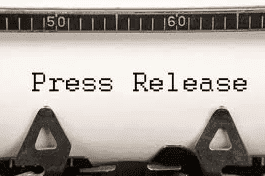You might think that more is more when it comes to media coverage, but it’s not the case when it comes to contacting the media. Here are five things you should NEVER do.
Harass
Sending through a media release and following up with a phone call five minutes later is not a wise move. Journalists have incredibly busy inboxes and do attempt to get to everything in there as quickly as possible. In between writing and filing stories, organising photoshoots, sourcing quotes, researching stories etc etc.
Unless you received a bounceback, yes, they got your media release. If you’re not getting a response, a follow up email within the same week is fine, and if you still don’t get a response, assume it’s your media release.
Make crucial errors
Treat a media release as a job application. You only get one shot to get in front of the right person’s eyes, and so you want to leave a good impression. Be careful not to include typos, repeat glaring inaccuracies or make claims you can’t support. Simplify your formatting as well. If a journalist opens the file, they want to see an easy to read release with a clear headline, lead and story angle. They don’t want to see out of focus, badly edited images or tons of graphs. Make things easy.
Getting your names wrong
There’s really not a better way to ensure your media release isn’t read than by addressing it to the wrong person. You might have the right email address but in copying and pasting the body of the email to many recipients you’ve forgotten to replace the name of the editor and publication each time. This type of attention to detail will really improve your chances at being read.
Don’t provide an angle
Not to be blunt, but if the release doesn’t include an angle and story worth covering, and one that’s tailored specifically to that publication, then you’re not going to get a response. Take it as a sign that you need to re-think your approach. Offer a reason why the journalist wants to hear about this particular story. What does your business offer that no one else does? Why is that interesting? Is it newsworthy? Can it tie into a current event? Does your business have an interesting way of operating or interesting way it started up?
By offering a journalist a story, rather than just another release that simply lists your business’ name and attributes, you’re more likely to get a foot in the door.
Being under prepared
If you manage to capture the attention of the journalist, make sure you’re prepared for what they need. Have quality high res images ready and a spokesperson who can comment on the issue at hand. If you have any relevant research in your database, get that prepared for the interview as well.
If you’re looking to do some PR for your business soon, take heed of the above advice. By avoiding some simple (and scarily common!) mistakes, you’re far more likely to get the attention of the media. Good luck!

